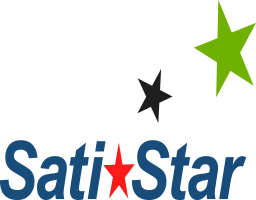Sustainability
Overview
A common problem encountered in Lean, Six Sigma and TQM implementation is performance deterioration after the completion and handover of a breakthrough improvement. This can happen despite installation of control mechanisms to monitor ongoing performance.
To sustain continuous improvement requires an integrated approach to the management of the company both from the perspective of process improvement and the leadership and development of people.
Anyone can create short term results, but the real challenge is in sustaining them over the long term. We’ll analyze your organizational capability and provide a recommended roadmap that will deliver sustainable results.
Scope And Deliverables
Sustainability is relevant to any improvement project. A definition of sustainability is the continuation of realized benefits after the implementation effort has been completed.
Ensuring that improvement projects are sustainable can reduce the likelihood of them collapsing after they have just finished. It also reduces the financial cost of improvement projects and the subsequent social problems, such as dependence of the process owners on external or interim resources. All process improvement assistance should be designed and implemented with the aim of achieving sustainable benefits.
Companies can strengthen the self-reinforcing processes that can lead to sustained improvement by actively managing the feedbacks that limit program success. The leadership team must carefully plan the roll-out of a new program to ensure demand for participation does not outstrip training and support infrastructure.
However, leaders should anticipate a slowdown in improvement results as the complexity of the problems addressed increases. Leaders may need to adopt new process improvement techniques to address increased complexity. Management must also recognize the interaction effects arising from other improvement programs, organizational units and the market. Decision rules and procedures throughout the organization should be reviewed even if they do not appear to be affected by the improvement program. In short, leaders must become adept in understanding that their organization is a dynamic system.
Examples of some additional key factors that influence improvement project sustainability:
- Participation and ownership. The key here is to get the process stakeholders to genuinely participate in design and implementation. Build on their initiatives and demands. Get them to monitor the project and periodically evaluate it for results.
- Capacity building and training. Training the process stakeholders to take over should begin from the start of any project and continue throughout. The right approach should both motivate and transfer skills to people.
- Company policies. Improvement projects should be aligned with your organization’s policies, or they risk being cancelled or reversed in the future.
- Financial. Nothing beats delivering tangible financial results. Team members should receive training in how to compute and communicate these improvements.
- Management and organization. Activities that integrate with or add to local structures may have better prospects for sustainability than those which establish new or parallel structures.
- Social, gender and culture. The introduction of new ideas, technologies and skills requires an understanding of local decision-making systems, gender divisions and cultural preferences.
- Technology. All new or modified equipment must be selected with careful consideration given to the availability of resources for maintenance and replacement parts.
- Environment, Health & Safety. Employees should be involved in identifying and managing EH&S risks.
- External economic factors. In a weak economy, projects should not be too complicated, ambitious or expensive.
- Realistic duration. A short project may be inadequate for solving entrenched problems in a sustainable way, particularly when behavioural and institutional changes are intended. A long project, may on the other hand cause personnel to lose interest.
What We Will Do
- Assess internal culture.
- Examine company historical performance in previous projects.
- Assess employee and leadership team capability.
- Examine reasons for employee turnover.
- Examine existing decision-making systems.
- Develop a set of recommendations for how to ensure long-term sustainability of the improvement effort.
- Provide a roadmap for the implementation of the recommendations.
- Provide on-going guidance on implementing the transition.
- Guidance on how to measure the results of the change.
What We Need You To Do
- Commit to the change toward a culture of sustainability.
- Ensure the active participation of the leadership team in the sustainability program.
- Provide us with access to the required internal personnel.
- Authorize those personnel to provide us with the required information in a timely fashion.
- Assign resources as needed.
- Ensure timely review and approval of recommended actions.
- Ensure timely implementation of approved actions.
WHAT PEOPLE ARE SAYING
SatiStar's Experience Makes The Difference!
